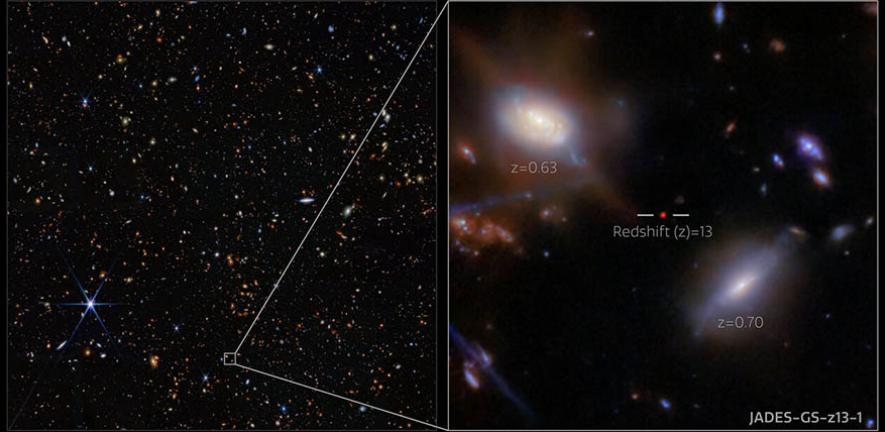This result was totally unexpected by theories of early galaxy formation and has caught astronomers by surprise.
Roberto Maiolino
The James Webb Space Telescope has once again astonished the scientific community with a discovery that, as often happens with the use of this instrument, challenges theories that many experts considered consolidated: it has allowed the discovery of a distant galaxy observed just 330 million years after the Big Bang that showed a bright hydrogen radiation at a time when it was thought that such signals were completely blocked. This was revealed by the work of a team of researchers led by Joris Witstok of the University of Cambridge detailed in a recent scientific study subjected to peer review and published in the scientific journal Nature. "This result was totally unexpected from theories of the formation of primordial galaxies and took astronomers by surprise," commented the co-authors, adding that further observations will be carried out to obtain more information on the nature of the galaxy and the origin of its intense radiation.
The NASA, ESA and CSA James Webb Telescope was launched with far from indifferent goals, including that of exploring the so-called “cosmic dawn”. This is the era in which the first galaxies formed after the Big Bang and which, according to theory, characterized a Universe surrounded by a dense fog of neutral hydrogen that absorbed ultraviolet light. Among the radiation absorbed and, according to theory, impossible to detect, there was also Lyman-alpha, or the light emitted by hydrogen atoms when electrons change energy levels. This is one of the many radiations that would have been blocked by the hydrogen fog and that would not have been visible until about a billion years after the Big Bang, when the process of reionization would have dissipated it. However, using NIRCam – a near-infrared camera capable of measuring brightness in different filters – and NIRSpec – a spectrograph that allows us to analyze light in detail – the researchers found a counterexample that could potentially revolutionize our conception of the early Universe.
In particular, by analyzing the so-called “redshift” – which provides a measure of the distance of a cosmic object: the higher the value, the older the image we observe – they identified JADES-GS-z13-1, a galaxy dating back to a time when the Universe was only 330 million years old with a strong emission of Lyman-alpha, which was thought impossible to detect. “The confirmation of Lyman-α radiation from this galaxy has great implications for our understanding of the early Universe. We should not have found a galaxy like this, given our understanding of how the Universe evolved. We might think of the early Universe as being shrouded in a thick fog that would make it extremely difficult to spot even the most powerful lighthouses peering out from it, yet here we see the beam of light from this galaxy piercing the veil,” the authors conclude.
